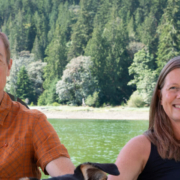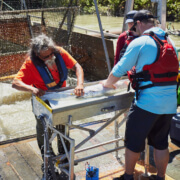Former sawmill transforms into pristine salmon habitat
- Creating 8.3 acres of fish and wildlife habitat
- Supporting 145 bird, 218 plant, and 29 fish species
- Planting 30,000 native plants
- Removing 12,000 cubic metres of concrete
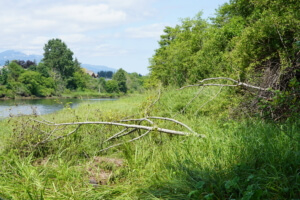
Hollyhock Flats, one of the most productive areas in the K’ómoks Estuary, will be reconnected to Kus-kus-sum. (Braela Kwan)
Kus-kus-sum is a former industrial sawmill site in the heart of a salmon migratory corridor of the K’ómoks Estuary. Located at the mouth of a critical estuary, the site was once a tidally influenced forested wetland and riparian area prior to its development. It is a historical site for the K’ómoks First Nation.
After operating intermittently for nearly six decades, the sawmill closed its doors in 2006. The company demolished the mill and completed the required remediation works, yet the industrial footprint lingers. Most notably, a 400-metrelong steel piling wall stands in the Courtenay River.
Since 2020, PSF has contributed $38,850 to Kus-kus-sum through the Community Salmon Program. With support from PSF, the partnership of K’ómoks First Nation, Project Watershed, and the City of Courtenay is restoring Kus-kus-sum to a vibrant and productive ecosystem by removing industrial infrastructure, reintroducing tidal habitat elements, and planting native vegetation.
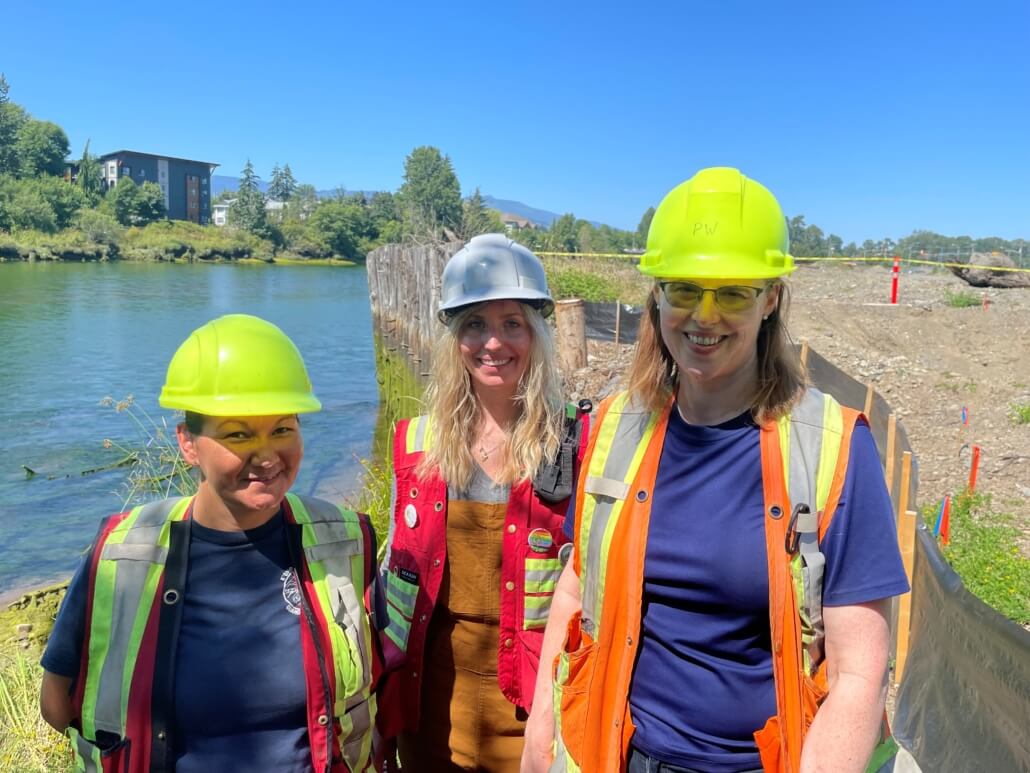
From left to right: Krissy Brown of the K’ómoks Guardian Watchmen Program and Project Watershed’s Caitlin Pierzchalski and Jennifer Sutherst work collaboratively on restoration and ecological monitoring efforts. (Allison Colina)
Once the restoration work is complete, the site will create 8.3 acres of habitat for fish and wildlife, advance local climate action, and restore a sacred ecosystem to its traditional stewards.
Chinook, coho, pink, and chum salmon rely on the K’ómoks Estuary. Currently, seals and sea lions utilize the steel piling wall as an opportunistic feeding platform to easily hunt migrating salmon. The restoration work will remove the steel piling wall, effectively reducing predation pressures on both out-migrating juveniles and returning adult spawners.
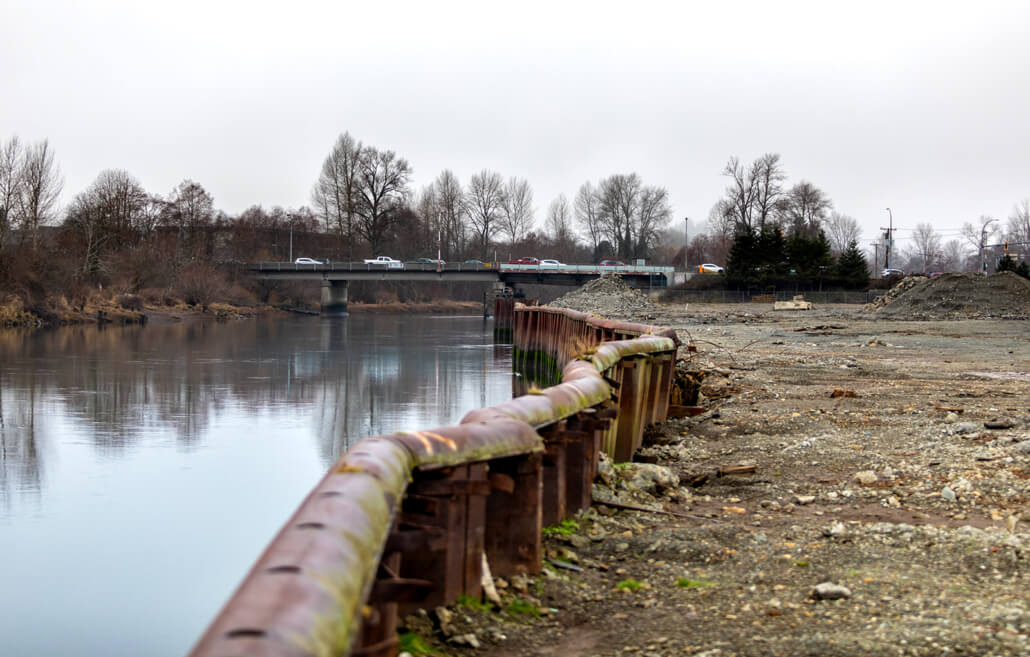
The steel piling wall separating the Courtenay
River from the Kus-kus-sum site will be removed. (Alanna D Photography)
Additionally, the project will improve salmon habitat quality.
“We are reintroducing natural habitat elements, such as tidal marsh islands and channels, and planting native vegetation to improve habitat quality and restore some of the habitat complexity that allowed biodiversity to thrive here before the site was developed,” says Caitlin Pierzchalski, executive director of Project Watershed.
Salmon won’t be the only wildlife to benefit from the restoration of Kus-kus-sum. More than 145 bird, 218 plant, and 29 fish species, as well as many intertidal animals call the K’ómoks Estuary home. All will be able to utilize the improved habitat.
In addition to improved conditions for local biodiversity, Kus-kus-sum will enhance local resiliency to climate change. The project will store carbon to combat greenhouse gas emissions by planting vegetation species with high carbon-sequestration capacities, such as Sitka spruce. The restoration will also help the community adapt to climate change, as it will limit flooding risks, reduce coastal storm surge, and combat sea-level rise.
“We’ve had catastrophic flooding several times in the last 15 years. We expect that to continue,” says Doug Hillian, City of Courtenay councillor. “This work will restore the natural condition of the river so that it functions as a natural asset to buffer against the effects of climate change.”
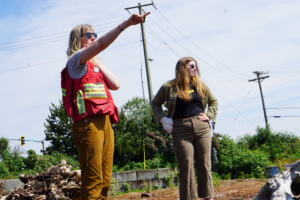
Project Watershed’s Caitlin Pierzchalski giving PSF’s Sarina Clay-Smith a tour of the Kus-kus-sum site. (Braela Kwan)
Site work kicked off in 2021 with the removal of 12,000 cubic metres of concrete and preliminary plantings. The priorities for 2022 and moving forward include: adjusting the elevation to a natural level where plants can thrive, creating habitat complexity, and continued plantings of species such as Sitka spruce, alder, hemlock, sedge, and willow, among others. The restoration work is expected to finish in 2024, after which K’ómoks First Nation and the City of Courtenay will be joint owners of the site.
Eventually, full ownership and management of the site will be transferred to K’ómoks First Nation, who will conserve and steward the site in perpetuity. “We look forward to monitoring and stewarding the area once it’s back within the K’ómoks First Nation name,” says Brown.

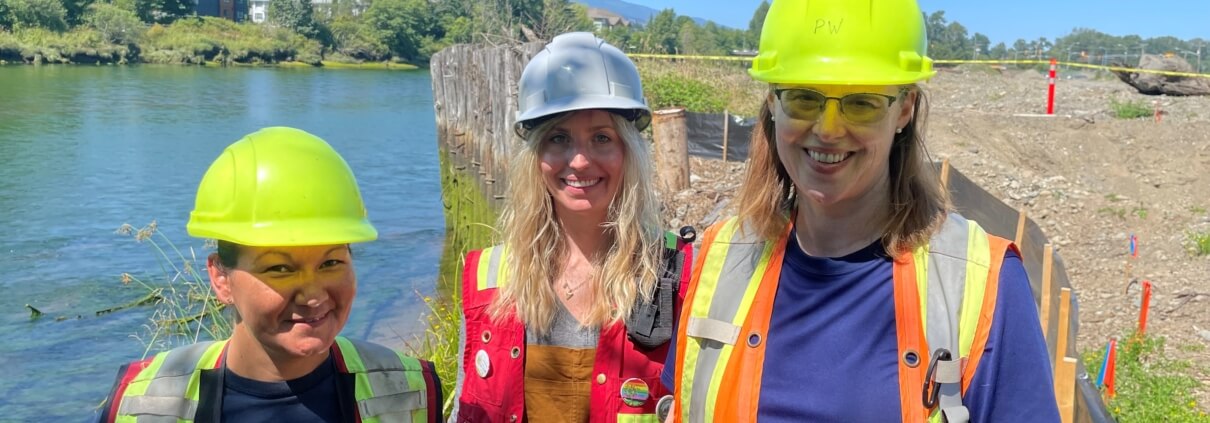
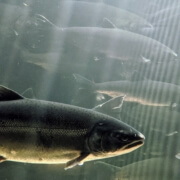

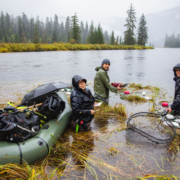
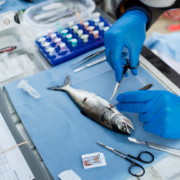 Amy Romer
Amy Romer